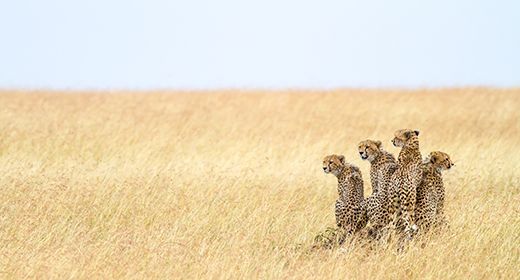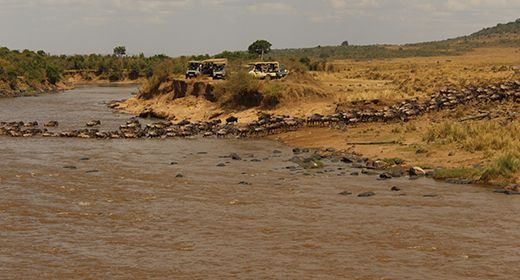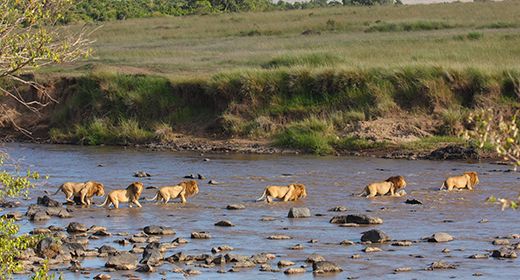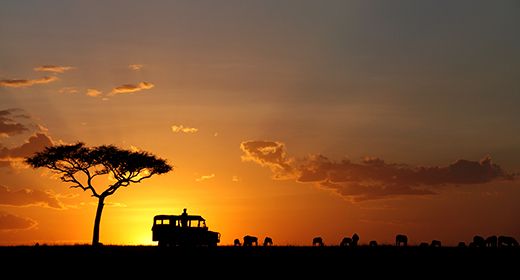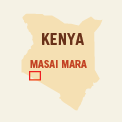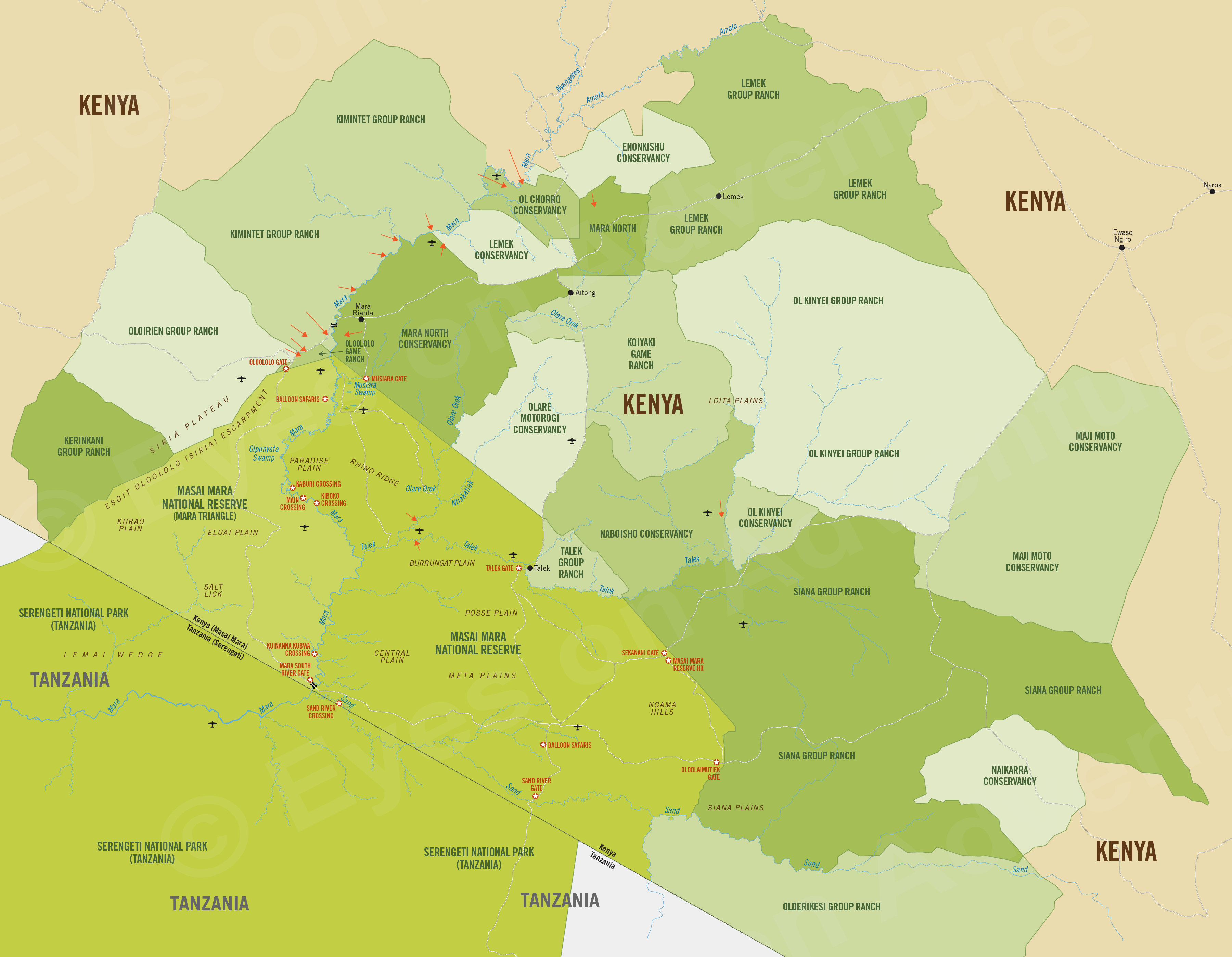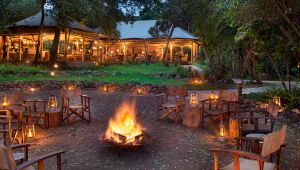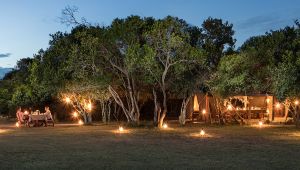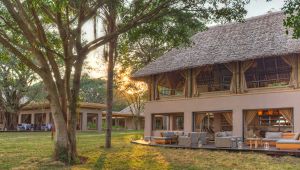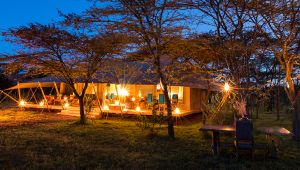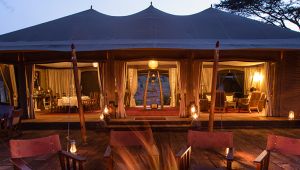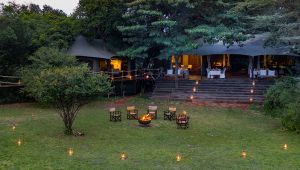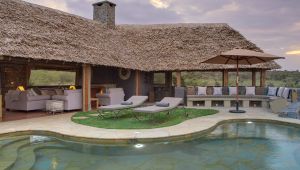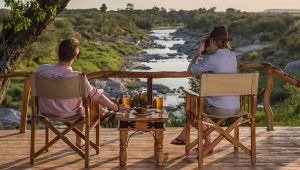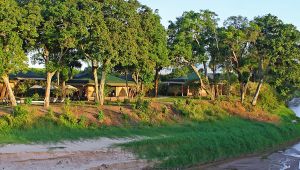Masai Mara
(incl. Mara North, Olare Motorogi, Naboisho, other conservancies)
Region Links: Amboseli & Chyulu Hills, East Coast Kenya, Great Migration, Laikipia, Masai Mara, Nairobi, Rift Valley & Central Highlands, Samburu, Tsavo
Highlights
- Africa's annual Great Migration of over two million large mammals
- Superb predator viewing, especially lions, cheetahs, leopards, and spotted hyenas
- Private conservancies offer lower tourist densities than the reserve
- Experience the Maasai tribal culture
- Sophisticated safari properties and excellent seasonal and mobile camps
EOA Recommends: Angama Mara, Bateleur Camp, Kicheche Bush Camp, Mara Bushtops Camp, Mara Plains Camp, Naboisho Camp, Ngare Serian Camp, Rekero Camp, Sala's Camp, Sanctuary Olonana, Sand River Mara Camp, Serian Camp
Kenya's Masai Mara is one of the world's top wildlife destinations. 'The Mara' offers Africa's Big Five, a variety of safari camps, cultural experiences with the Maasai people, and Africa's Great Migration.
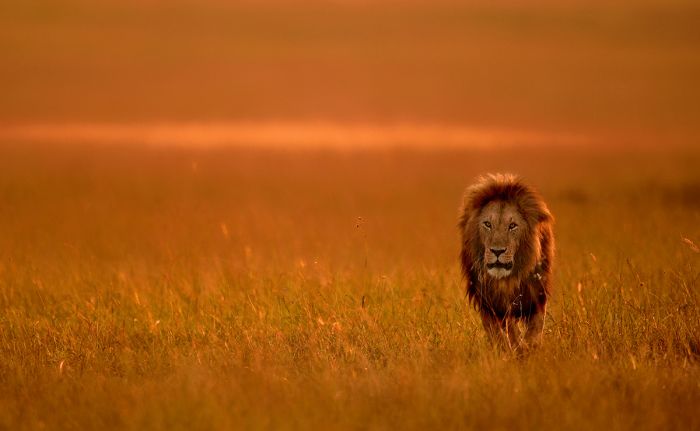
A big male lion on the plains in Masai Mara, Kenya.
The Masai Mara boasts excellent year-round game viewing, but the main tourist draw is the annual Great Migration of wildebeest and zebra, a sought-after experience for safari-goers world wide. The migration is a circular route traversing both the Mara and the Serengeti (south of the border in Tanzania). The massive herds spend around three months in Kenya from about late-August to October.
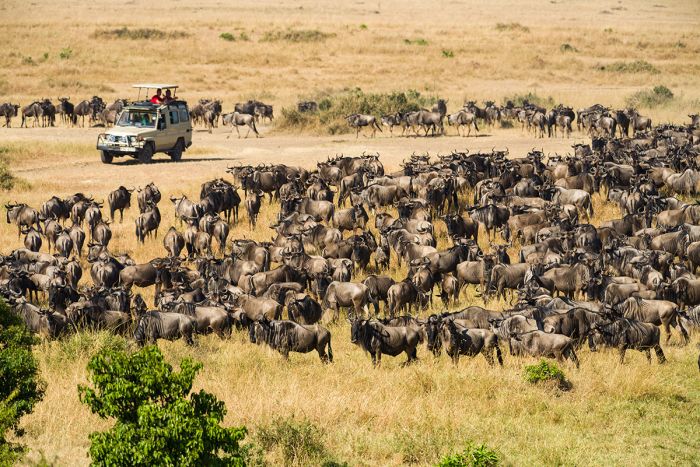
A game drive during the Great Migration in Kenya's Masai Mara.
The Mara is a photographer's dream, with abundant lion, cheetah, elephant, buffalo, giraffe, the migratory zebra and wildebeest, topi and Coke's hartebeest. Leopard and serval are often seen, while the endangered black rhino may be encountered emerging from the dense bush.
Blue monkey and red-tailed monkey thrive in the evergreen Kichwa forest. Troops of banded mongoose roam the savannas and large pods of hippo and huge Nile crocodiles are abundant in the Mara river. The Mara is also home to over 450 birds.
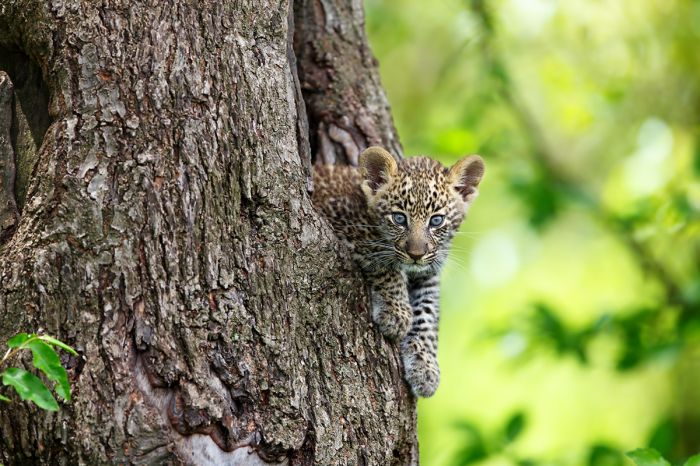
A leopard cub peaks out from a tree in the Masai Mara, Kenya.
The Masai Mara is part of the greater Mara-Serengeti ecosystem, with Tanzania's adjoining Serengeti covering the vast majority of this spectacular multi-country wildlife haven. Crossing the border between Kenya and Tanzania is only permitted at specified border control facilities, so most tourists choose either Kenya or Tanzania, but visiting both is certainly a viable option.
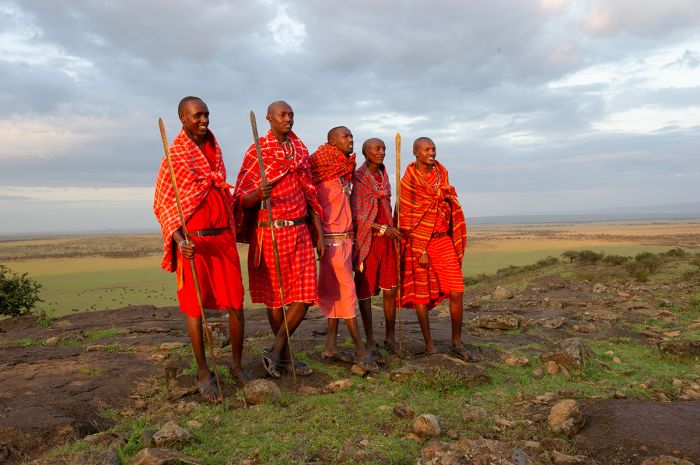
A group of Maasai men with the Mara below (Copyright © James Weis).
Read More...
Balloon Safaris, Great Migration, History, Maasai People, Mara-Serengeti, Mara Conservancies, Mara North Conservancy, Mara Reserve, Mara Triangle, Naboisho Conservancy, Olare Motorogi Conservancy, Oloirien Group Ranch, Siana Group Ranch, Visiting the Mara, Wildlife
History
The Bantu-speaking, pastoralist Maasai people migrated south from the lands lying to the north of Lake Turkana in northwest Kenya in the first millennia AD. During this period, the Maasai conquered and/or assimilated with other ethnic tribes in southern Kenya. By the mid-1800s, the Maasai tribe controlled most of the Great Rift Valley.
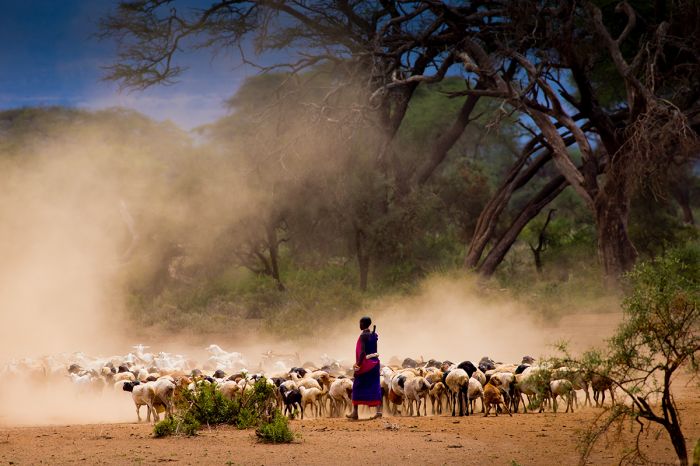
A young Maasai herder with his goats in southern Kenya.
Britain began its colonization of Kenya with the arrival of the Imperial British East Africa Company in 1888 and establishment of a trading harbor at present-day Mombasa on the Indian Ocean coast. Britain remained in control of the country of Kenya until its independence in 1964.
The Masai Mara Game Reserve (usually referred to simply as 'the Mara') was established in 1961 and is named in honor of the Maasai people, who are the ancestral inhabitants of its land. The name Mara means "spotted" in the Maasai language, referring to the view from afar of the open grassland plains with its various acacia trees and Croton bushes dotting the landscape.
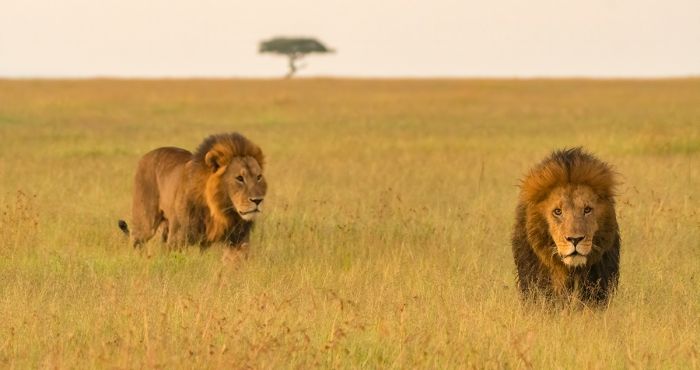
Two male lions walking on the grassland plains of the Masai Mara.
The Mara's land was granted its original protection in 1961 to preserve its wildlife from increasing pressure by trophy hunters. The reserve at this time covered 201 sq miles (520 sq kms), including the land west of the Mara River (known as the 'Mara Triangle'). Later in 1961, the protected area was extended to the east, increasing the reserve to 703 sq miles (1 821 sq kms).
In 1974, the majority of the reserve was given National Reserve status, with a smaller portion covering 61 sq miles (159 sq kms) returned to the local Maasai communities. In 1976, a further section was returned to the Maasai people, leaving a total protected area of 583 sq miles (1 510 sq kms).
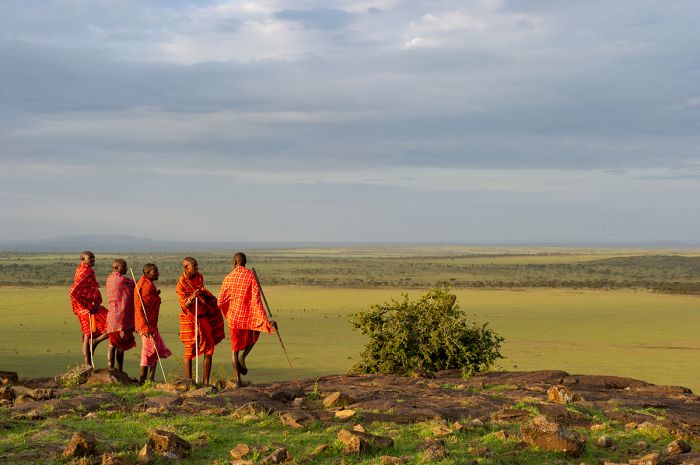
Massai men and the Mara plains (copyright © James Weis).
In 1994, management of the Mara Reserve was divided into two sections, with the Mara River as the shared border. Control of both sections of the reserve was given jointly to the TransMara County Council and Narok County Council, but the section west of the river, known as the Mara Triangle, received far less attention and its roads and infrastructure fell into disrepair.
In 2000, concerns about the effective of management of the Mara Triangle led to the establishment of a separate and dedicated entity to take over its management. The non-profit Mara Conservancy was formed and since then, the Triangle has vastly improved, with well managed roads, game wardens, and far less tourists due the the relatively fewer safari camps utilizing its land.
In 2011, a major road was proposed that would cut through the reserve, but global outcry has successfully prevented its construction.
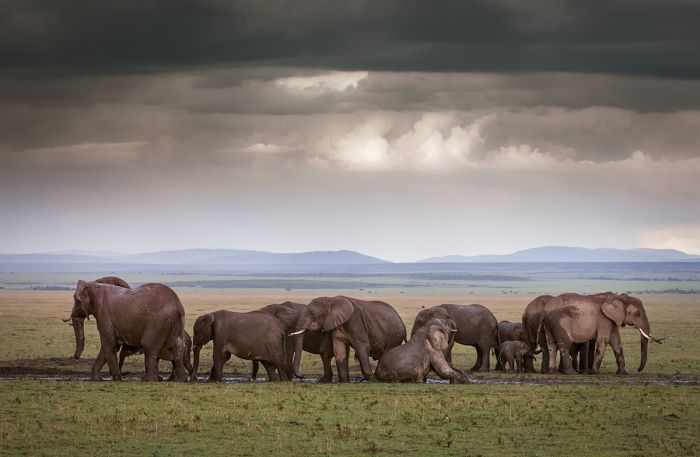
A herd of elephants enjoying a mud bath in the Masai Mara.
Mara-serengeti ecosystem
The combined area of Kenya's Greater Masai Mara (which includes its adjoining private conservancies) and Tanzania's Greater Serengeti (which includes its adjoining conservation area) covers roughly 15 000 sq miles (39 000 sq kms).
This Greater Mara-Serengeti ecosystem straddles the Kenya-Tanzania border and is Africa's greatest wildlife-viewing destination. The annual Great Migration of over two million large mammals follows a route through the Mara-Serengeti lands.
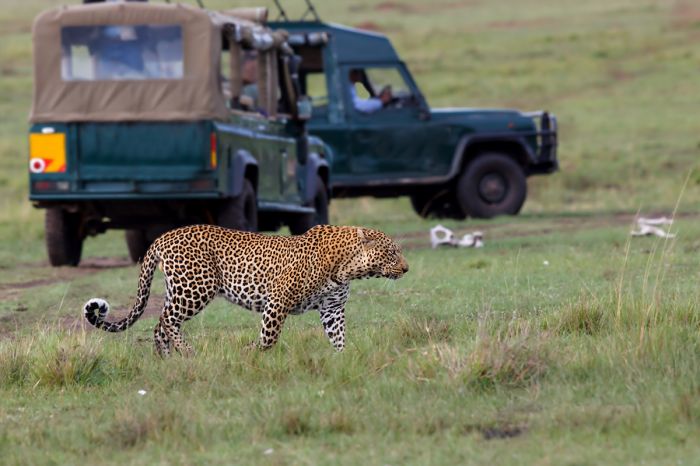
An impressive male leopard in the Masai Mara, Kenya.
THE GREAT MIGRATION
The spectacle known as 'The Great Migration' occurs on this large ecosystem and consists of roughly two million wildebeests and zebras trekking in a year-long, circular, clockwise march across the Mara and Serengeti grasslands. The large herds spend about three months on the Mara (typically late July through early October) and the remaining nine months on Tanzania's Serengeti.
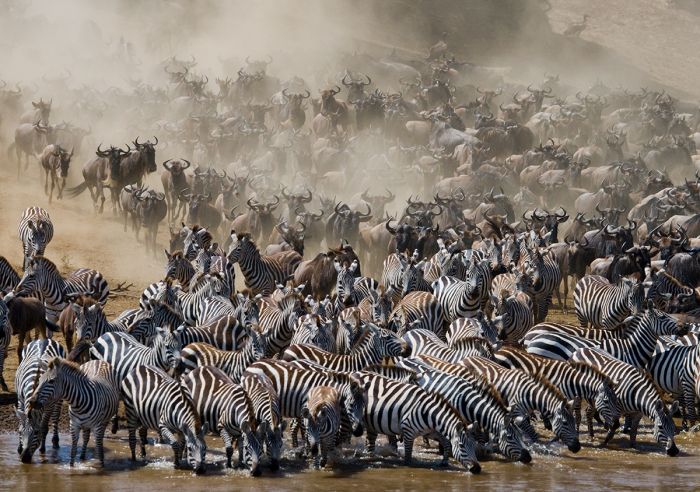
The Great Migration of wildebeests and zebras.
The Mara River is a dangerous obstacle to the herds that decide to cross it (sometimes needlessly in both directions without apparent reason). Many die from drowning in the chaos and others are taken by the Mara's large crocodiles that lie in wait for their first big meal in many months. All in all, it is a very dramatic scene to witness.
The Mara has superb wildlife numbers throughout the entire year, even when the migration has moved south into Tanzania. Only the wildebeests and zebras make the migratory movement; the cats, hyenas, elephants and all the rest of its numerous species remain in and around the Mara all year.
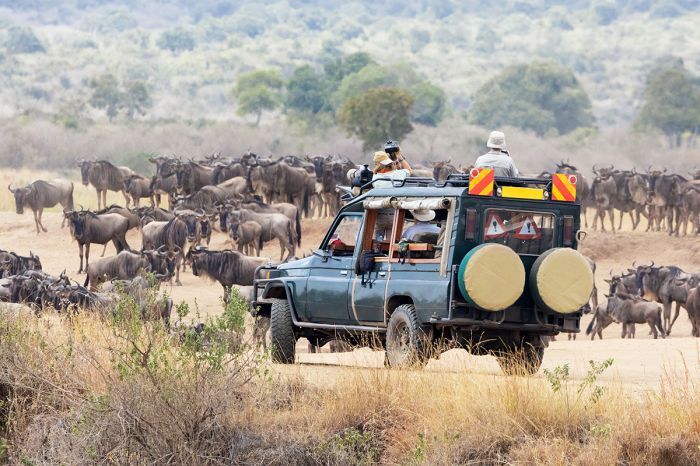
Safari game drive in the midst of the migration in the Masai Mara.
To increase your chances of viewing the dramatic Mara River crossings by the wildebeest and zebras, the months of July and August are usually best (when the crocs are still very hungry). Staying at a safari camp along the Mara River means you are close to the most-used crossing points.
Staying in one of the private conservancies does not mean you are excluded from the actual reserve, but it means an early rise and some planning to get to the crossings. Seeing an actual crossing usually entails long hours of waiting and hoping!
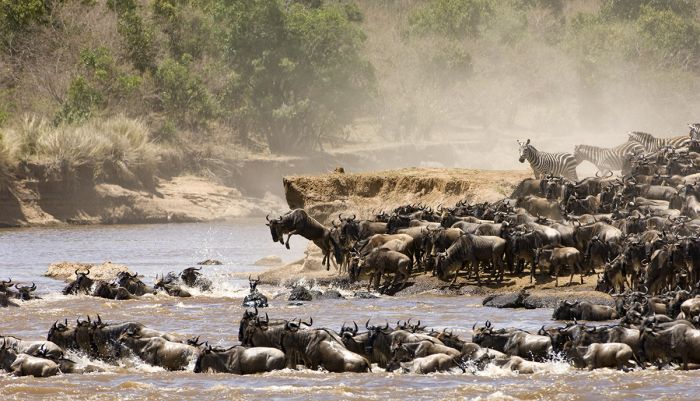
A big hered crossing the Mara River during the Great Migration.
THE MARA RESERVE
The Masai Mara Reserve proper is open to the public (entrance fees required) as well as guests staying at the numerous lodges and safari camps situated inside the reserve and in any of the private conservancies around the reserve. Self-drivers and day-safari guests from Nairobi are here in numbers during the busiest months (especially during the migration months).
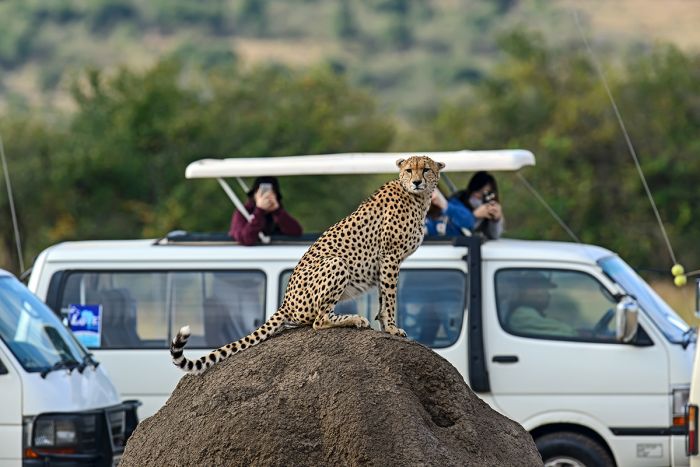
Cheetah and safari vehicles in Masai Mara.
The Mara River is the western border of the main reserve and the land across the river is the Mara Triangle. There are a large number of safari camps in the reserve east of the river, so game drive vehicles and tourist numbers are far greater here than in the Triangle.
Seasonally, the months during which the migration is in the Mara (generally late July through early October) bring a high number of tourists and most of the safari camps are full.
For those wanting to experience the Mara without the crowds, visiting during the months when the migrating herds are located to the south in Tanzania's Serengeti is a good plan. Wildlife in the Mara is still spectacular during the "non-migration" months and the experience is much different without all the tourists.
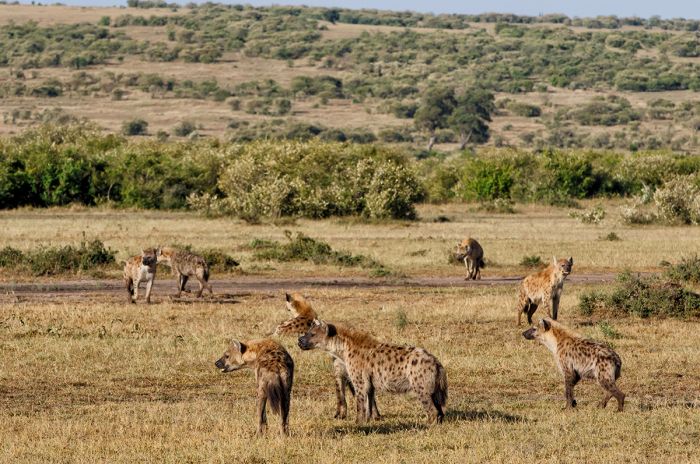
Spotted hyenas are abundant in the Mara.
Due to the large numbers of tourists that visit the reserve, there are strict rules that forbid walking, off-road driving and game drives after sunset. The rules are imposed to protect the habitat from degradation by overuse. In essence, the Mara Reserve functions as a typical National Park.
THE MARA TRIANGLE
The portion of the reserve proper that lies west of the Mara River and east of the Oloololo Escarpment is called the 'Mara Triangle' (it is a triangular shaped piece of land). It forms around one-third of the entire reserve and is managed separately from the rest of the Mara Reserve.
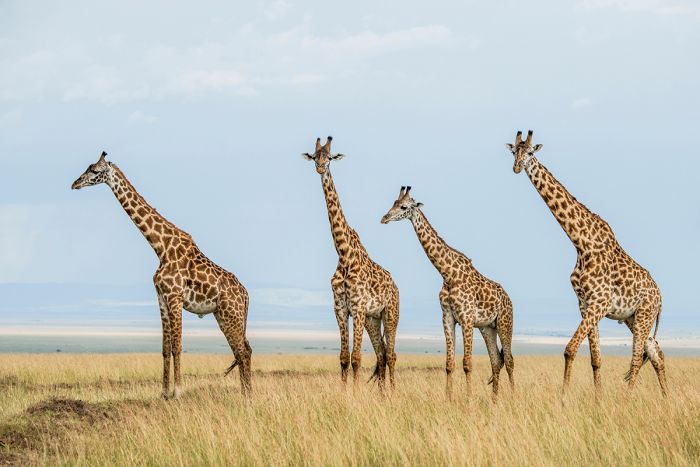
Giraffes in the Mara Triangle, Masai Mara, Kenya.
Prior mismanagement of the Triangle led to a restructuring of the Mara whereby the Mara Conservancy, a non-profit organization, was given control in 2000. Since then, management of the Mara Triangle has generally been superior to that of the rest of the reserve, with better road maintenance and anti-poaching controls.
There are only a few safari camps situated in the Triangle and more atop the escarpment on the far western side of the reserve (with amazing views over the reserve), so crowds are generally small to non-existent in the Triangle, especially when compared to the reserve east of the Mara River.
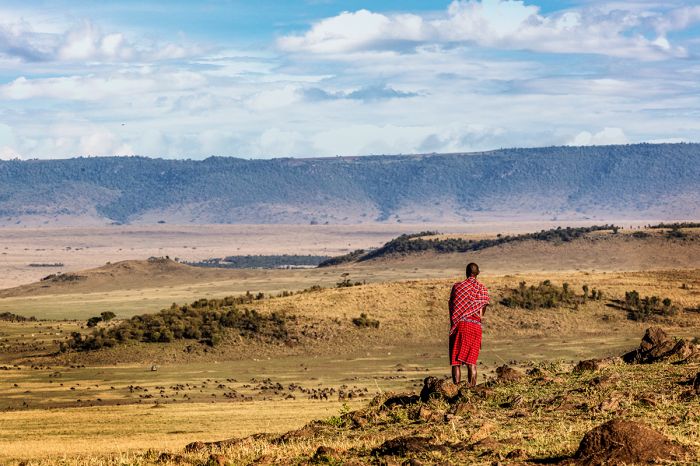
A Maasai guide looking towards the escarpment in the Mara Triangle.
MARA CONSERVANCIES
In the past 15 years, most of the land directly adjoining the reserve (owned by the local Maasai tribes) has organized into large, private, self-managed conservancies to offer more wildlife habitat and tourism.
These conservancies also have safari camps and lodges, but only guests staying inside the conservancy are allowed to do safaris there. Some neighboring conservancies have agreements with one another to allow traversing rights, thereby expanding the game viewing for their guests.
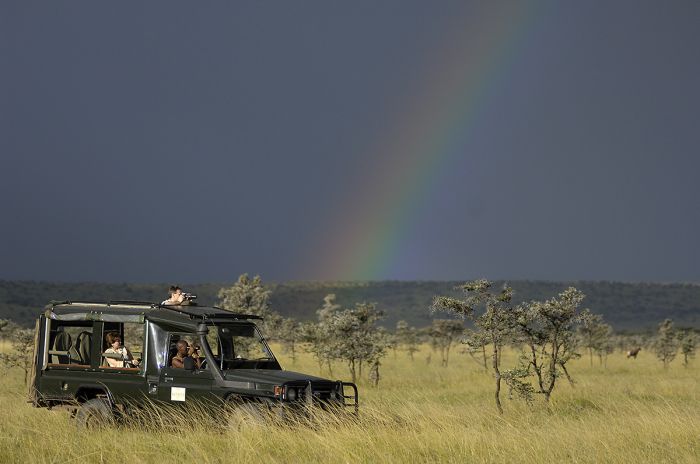
Game drive in Olare Motorogi Conservancy.
The game viewing in these conservancies, especially in those directly north of the reserve proper, is on a par with that inside the reserve. Furthermore, the density of camps inside the conservancies is generally lower than inside the reserve, especially compared to the most popular sector along the Mara River inside the reserve. Game viewing is strictly managed with regards to number of vehicles permitted at a sighting.
Staying in one of the safari camps in a Mara Conservancy offers guests the opportunity to have a more exclusive game-viewing experience (due to the much reduced tourist numbers), while still allowing day visits into the reserve proper (entrance fee required) if desired (perhaps to go in hopes of seeing a major wildebeest/zebra river crossing during the migration months). Guided safari walks (during the day) and game drives past sunset are another option inside the conservancies.

The various Mara conservancies have great wildlife.
Mara North Conservancy (MNC)
One of the best of the Mara conservancies, Mara North directly borders the National Reserve and offers easy access for guests who want to spend a day along the Mara River. MNC covers an area of 100 square miles (250 sq kms) and is one of the most well-established of the private Maasai-owned landholdings. MNC's partner members currently include 10 safari camps and 3 horse-riding outfits.
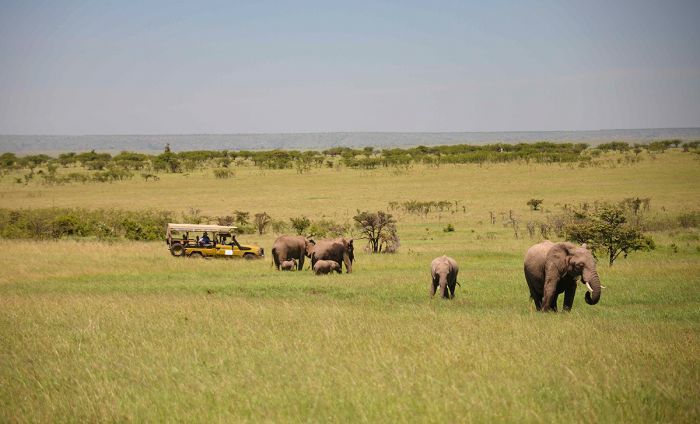
Game drive in Mara North Conservancy.
The MNC offers excellent game viewing with all the big cats, including lions, cheetahs, and leopards, plus loads of general plains game. During the migration, MNC is literally covered in wildebeests and is a great place to be, with far lower tourist densities than the Mara Reserve itself. The Maasai landowners retain the right to graze their cattle on the land, so one will gain an appreciation of how tourism and indigenous people can function together. Vehicle numbers are restricted at wildlife sightings.
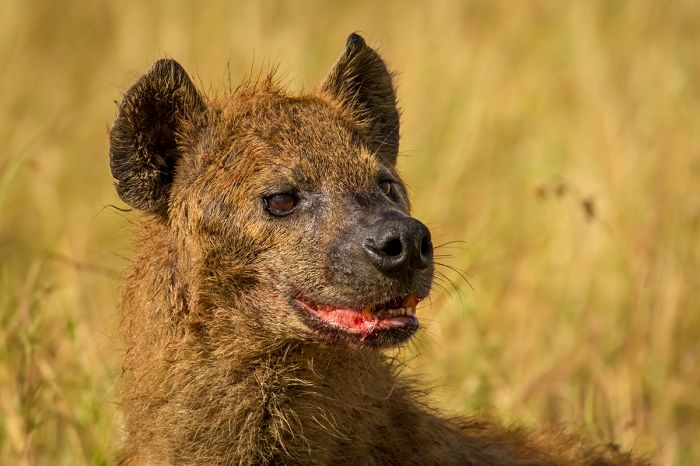
A spotted hyena in Mara North Conservancy.
Olare Motorogi Conservancy (OMC)
The Olare Motorogi Conservancy spans 52 square miles (134 sq kms) of superb safari land, bordering the Mara Reserve and lying just east of Mara North Conservancy. OMC was formed in 2006 as a merging of the former Olare Orok Conservancy and Motorogi Conservancy. OMC's habitat includes the lower valleys of two rivers, the Ntiakatiak and Olare Orok, beautiful Mara grasslands, riparian forest, and large areas of acacia woodland.
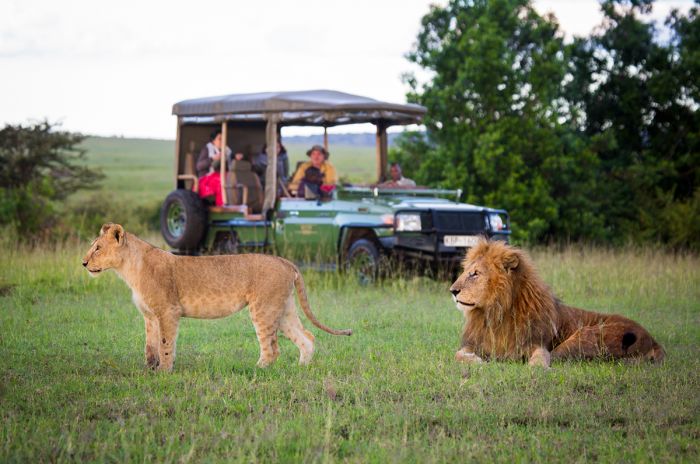
Game drive and lions in the Olare Motorogi Conservancy (copyright © Great Plains Conservation).
OMC offers superb game viewing all year, but especially during the annual migration, when tens of thousands of wildebeests and zebras arrive during August and September. A smaller wildebeest migration that moves between OMC and the Loita Plains to the east arrives in OMC around March/April.
There are plenty of predators, including several prides and a high density of lion, numerous cheetah and leopard, and a strong population of spotted hyena. Plains game like topi, Thomson's and Grant's gazelle, giraffe, eland, and elephant are also here in good numbers. Vehicle numbers are restricted at wildlife sightings.
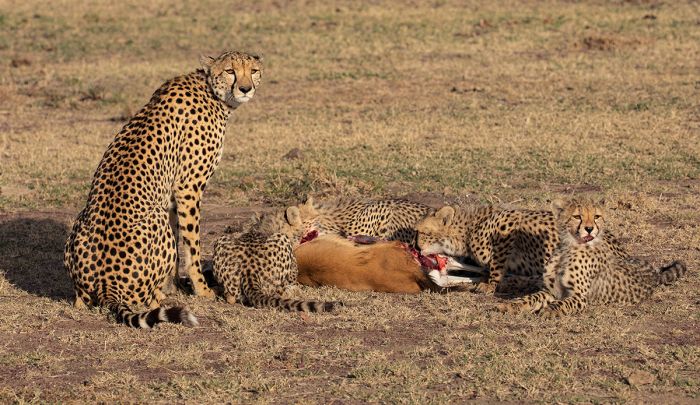
Cheetah and cubs on an impala kill in the Olare Motorogi Conservancy.
Naboisho Conservancy (NC)
Created in 2010, the Naboisho Conservancy is another superb game viewing conservancy lying directly north of the Mara Reserve. The NC covers 86 square miles (222 sq kms) of land that was previously part of the Koyiaki-Lemek Group Ranch. Naboisho shares a border with and lies southeast of Olare Motorogi Conservancy.
The landscape is one of classic Mara grasslands, rolling hills, acacia scrub, and riparian woodland. Like the Mara Reserve, NC boasts good numbers of cheetah, lion, leopard, and spotted hyena. Plains game is also abundant, with elephant, zebra, giraffe, gazelle, eland, and more. The number of vehicles at a sighting is strictly limited, which means a more exclusive game viewing experience than in the Mara Reserve.
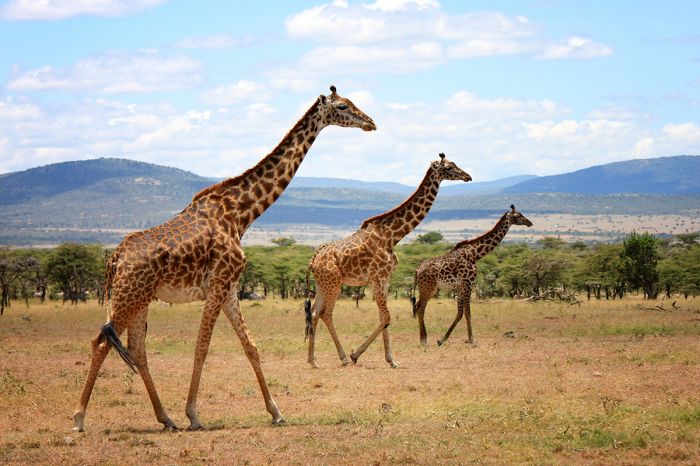
Giraffes in the Naboisho Conservancy.
Siana Group Ranch (SGR)
The massive Siana Group Ranch borders the Mara Reserve on the southeast and is one of the newer conservancies, which is still being organized with the local Maasai. The land here is diverse and feels remote, with good wildlife, but in smaller numbers than in the Mara Reserve and its northern conservancies. It is also located a long distance away from the Mara River. There are a good selection of more budget-oriented camps in Siana.
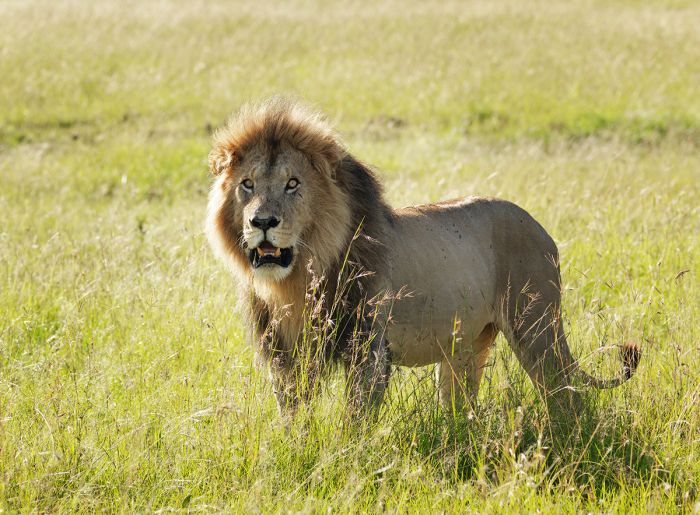
Male lion in the Siana Group Ranch.
Oloirien Group Ranch (OGR)
Located on the western border of the Mara Reserve and atop the Oloololo Plateau, Olorien has a small number of very good safari lodges with access to the Mara Triangle. The camps here sit on the edge of the escarpment with spectacular vistas into the Mara below. Game drives descend down the winding road into the Triangle, where tourist numbers are low. Wildlife viewing in the Mara Triangle is excellent, especially during the migration months of late-July through September.
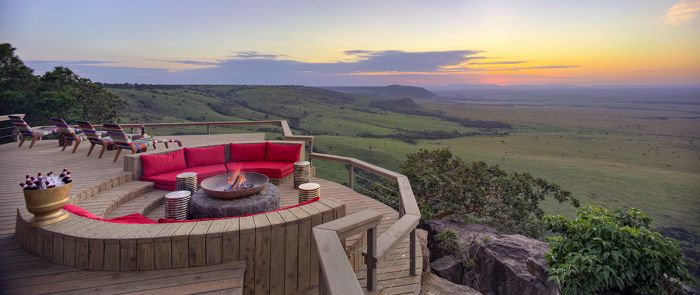
View from the escarpment in Oloirien, Angama Mara Camp.
WILDLIFE
Wildlife viewing in the Masai Mara is unequalled anywhere else in Kenya in terms of numbers and diversity. Lion are here in large numbers, with estimates of between 500 and a thousand. Cheetah are also present although harder to find, as they are more shy and vulnerable to harassment by other predators and by the tourist traffic.
Leopard are common along the rivers especially. Black-backed and side-striped jackal are found all over and the wetter areas of the Mara are good for finding serval.
Endangered black rhinos are here in small numbers too.
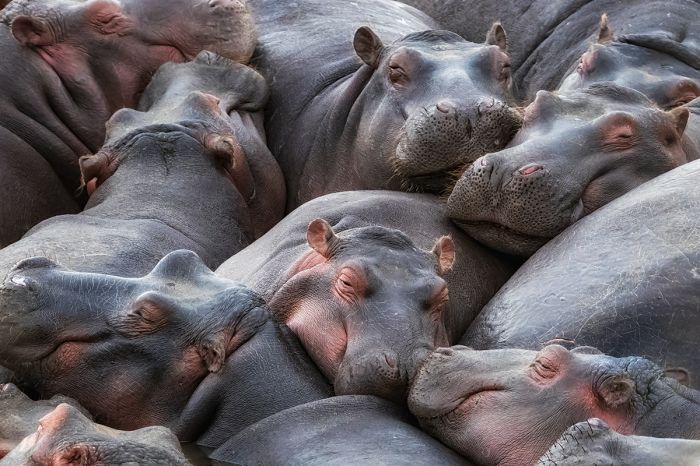
Hippos gathered in the Mara River.
The Mara River contains huge numbers of hippo and some gargantuan-sized Nile crocodiles. During the migration, lucky visitors may witness a crossing of the Mara River by a large herd of wildebeests and/or zebras. Early after the herds arrive, the hungry crocs grab and eat as much as they can swallow. It can be quite dramatic to see.
Elephant, buffalo, giraffe, topi antelope, Thomson's gazelle, Coke's hartebeest, warthog, roan antelope and more are all here in abundance. It is actually difficult to drive for more than a few minutes and not see wildlife in the Mara.
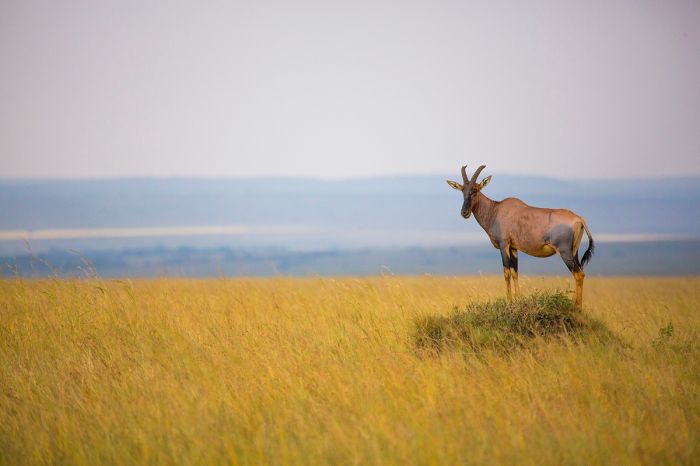
A topi antelope in the Masai Mara Reserve.
BALLOON SAFARIS
A very popular safari activity is a balloon safari at dawn over the Mara Reserve. Guests meet at one of the launch sites before sunrise and lift off for an amazing aerial safari over the waking landscape. Flights cost around $500 per person (including post-flight picnic breakfast with mimosas) and are generally 60-90 minutes in duration. After breakfast, guests do a morning game drive in the reserve.
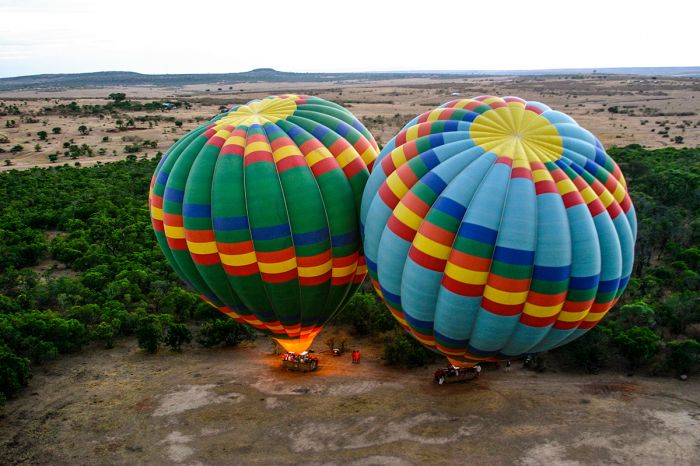
Hot-air balloons ready to lift off, Masai Mara, Kenya.
MAASAI PEOPLE
The resident people of the Mara region are the 'Maasai'. Tall and slender of shape and usually dressed in their traditional red cloth, adorned with metal and beadwork jewelry, and for the young men, long, ochre-colored hair, the Maasai are as much a part of the Mara as its wildlife. Their multi-colored and beautifully patterned cattle are an integral part of the Maasai culture.
Many of the local safari guides and most of the camp staff are of Maasai origin. Visits to Maasai villages offer visitors an opportunity to purchase their handmade jewelry and cloth.
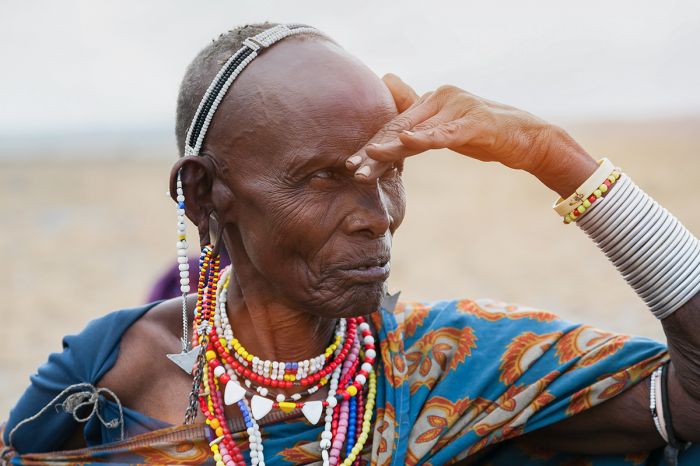
Maasai woman, Masai Mara, Kenya.
Visiting the Mara
Try to avoid the Mara over April and May, when heavy rains are likely. The best time to go for the wildebeest migration is late July thru mid-October.
Plan your trip carefully, as the route of the Great Migration is not cast in stone, and is not always easy to predict.
Travelers to the Masai Mara may come across Maasai people. Before photographing these people, it is important to ask for their permission out of respect.
Read More...
Balloon Safaris, Great Migration, History, Maasai People, Mara-Serengeti, Mara Conservancies, Mara North Conservancy, Mara Reserve, Mara Triangle, Naboisho Conservancy, Olare Motorogi Conservancy, Oloirien Group Ranch, Siana Group Ranch, Visiting the Mara, Wildlife
Great Good Fair Poor
- Jan
- Feb
- Mar
- Apr
- May
- Jun
- Jul
- Aug
- Sep
- Oct
- Nov
- Dec
GENERAL TIPS
It is advised to avoid the Masai Mara over March and April, when heavy rains occur. June to September is fantastic for general game viewing. The wildebeest herds usually cross into the Mara from the Serengeti sometime around late July and move south back into Tanzania in early October.
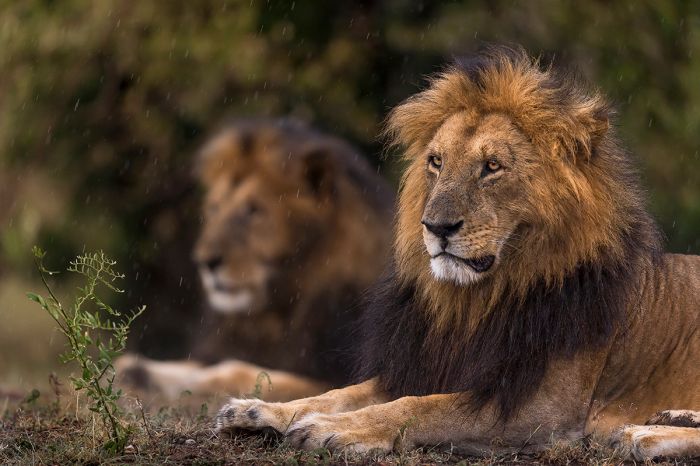
Male lions in rain shower, Masai Mara, Kenya.
THE GREAT MIGRATION
The annual movement of wildebeest and zebras across the Serengeti-Mara ecosystem is one of the greatest spectacles in the natural world. These large herds move in a circular track across southern Kenya and northern Tanzania, taking a full year to complete. The migrating herds are in the Kenya portion of the trek (the grassy plains of the Greater Masai Mara) from around late July until sometime in October.
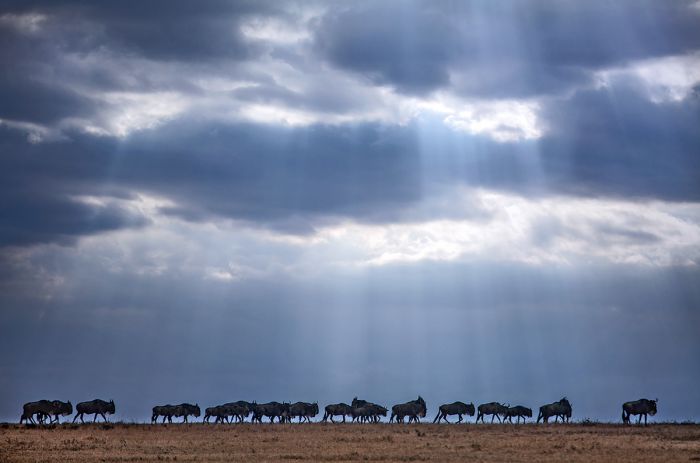
Wildebeests on the horizon in the Masai Mara.
In essence, the wildebeest are taking advantage of the strongly seasonal conditions, spending the wet season on the northeastern plains of Tanzania, and the dry season in the woodlands of southwestern Kenya. The wildebeest give birth between January and March on the short grass plains in Tanzania.
The migration is rarely ever the same in terms of precise timing and direction, as local conditions influence grass growth. The wildebeest may, therefore, move off the open plains earlier in some years and remain in the northern woodlands for longer in others.
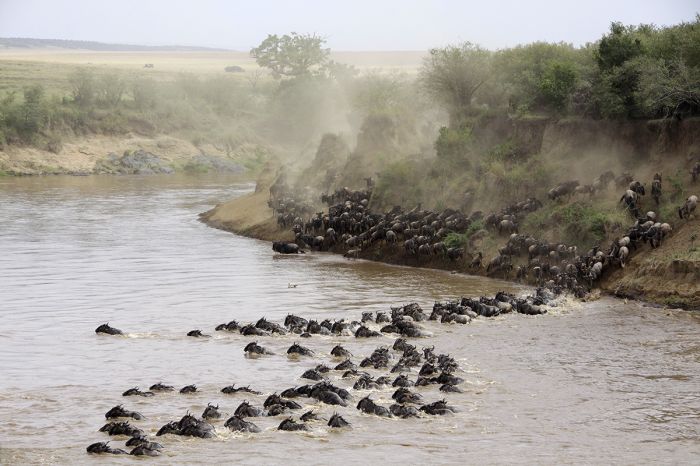
Migrating wildebeests crossing the Mara River.
RAINS
The rainfall in the Mara generally occurs between November and May, with November-December being considered the 'short rains' and March-April the 'long rains'. During the November and December time frame, the rains are unlikely to interfere with game drive activities and it is rare to have a full day of rainfall; afternoon showers are most common. January-February is relatively dry, with less chance for rain, although rain showers still occur.
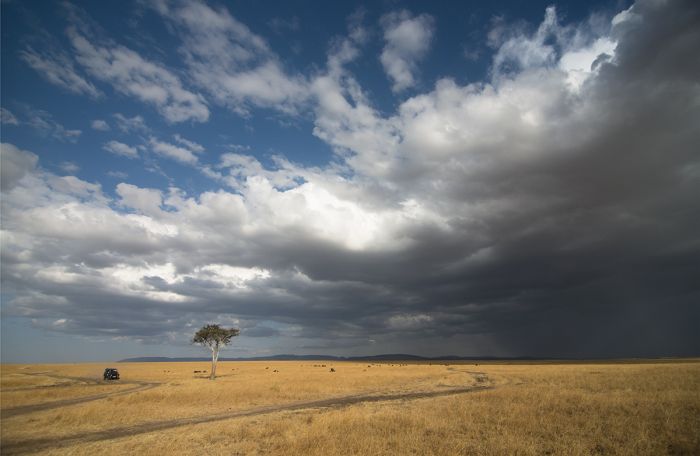
Storm approaching in Masai Mara.
The March to May time frame is the wettest period and there is usually at least some rain on most days. Cloudy skies are the norm and colder days are also possible. Showers do not usually continue all day, but rainfall is regular. The roads are muddy and often difficult to drive.
TEMPERATURE
The dry season (June to October) is sunny most days and rarely too hot. Rare rain showers can occur but are unlikely. From June thru August the afternoon temperature is around 77°F (25°C) and sometimes a bit higher, but can be chilly in the evenings and the early mornings are commonly 54°F (12°C). September and October days are around 81°F (27°C), with cool mornings persisting (54°F/12°C).
The wet season spans from November thru May. Temperatures during the day are fairly static and very comfortable with afternoons reaching a high of 81°F (27°C). Early mornings are slightly warmer, with average temperatures of 55°F (13°C).
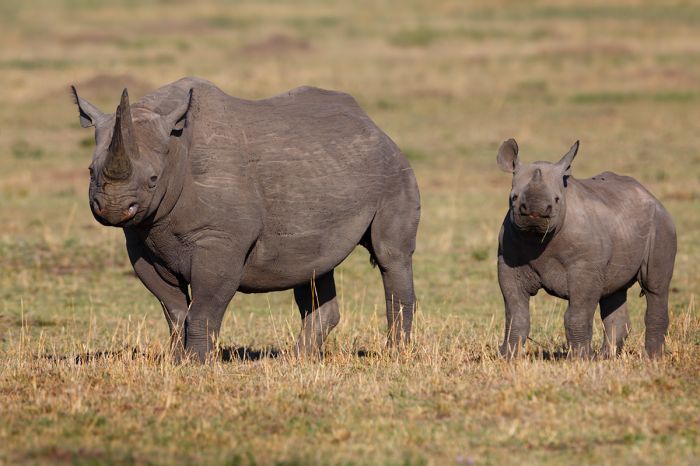
Black rhino and her calf in the Masai Mara, Kenya.
Showing 1–10 of 10 results
Located in a private concession on the edge of the Mara Triangle, which has low tourist densities. The camp is ideally positioned for the annual Great Migration of over two million herbivores. Families welcome.…
Located in a large, exclusive wildlife reserve, with no crowds and excellent year-round wildlife viewing. Romantic design evokes the early mobile safaris of the British Raj era. Game drives, walking, cultural activities.…
Located within the private Naboisho conservancy bordering the Masai Mara National Reserve but without the crowds. Superb wildlife concentrations and no restrictions regarding night drives and off-roading.…
Large camp situated in a private concession on the edge of the Mara Triangle, which has low tourist densities. The camp is ideally positioned for the annual Great Migration of over two million herbivores. Families welcome.…
Nostalgic and romantic camp modeled after the luxury mobile camps used by Africa's early explorers, but with modern-day conveniences and hospitality. Located away from the crowded sections of the reserve with excellent wildlife viewing. Game drives, walking, culture.…
Located within the private Naboisho Conservancy, bordering the Masai Mara Reserve. Very low density of camps and visitors, excellent wildlife viewing, full-day drives into the reserve if requested, night drives, off-roading, culture.…
Located within the private Olare Motorogi Conservancy bordering the Masai Mara Reserve. Low density of tourists, excellent wildlife viewing, full-day drives into the reserve if requested, night drives, off-roading, culture.…
Located within a private conservancy bordering the Masai Mara National Reserve but without the crowds. Superb wildlife concentrations and no restrictions regarding night drives, off-roading, or walking.…
Located on a bend of the Talek River commonly used as a crossing point for resident wildlife. Centrally located in the reserve, with quick access to the Mara River. Families are welcome.…




